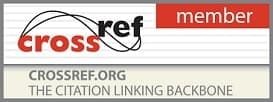- Printed Journal
- Indexed Journal
- Refereed Journal
- Peer Reviewed Journal
P-ISSN: 2394-1685 | E-ISSN: 2394-1693 | CODEN: IJPEJB
Impact Factor (RJIF): 5.38
2018, Vol. 5, Issue 6, Part B
Effectiveness of 4 weeks task specific training in improving postural control and balance in Subacute and chronic stroke: A randomized control trial
Author(s): Nandini B Kadabi
Abstract:
Balance forms the “foundation for all voluntary motor skillsâ€. Impaired postural control and balance is a key characteristic of mobility problem presented in stroke patients who have greater postural sway during quite standing and voluntary movements than healthy people. Therefore purpose of the study is to evaluate the effects of task specific training to improve postural control and balance both static and dynamic in subacute and chronic stroke.
Randomized Controlled Trial consisting both males and females participants (40) who are clinically and radio logically diagnosed with subacute and chronic stroke having hemiparesis. Group A: 20 participants underwent Conventional treatment (Control group).
Group B: 20 participants underwent Task Specific Training with conventional treatment (Experimental group) Outcomes measures were in terms of Functional Independence Measure and Postural Control & Balance for Stroke (PCBS) test. Readings were recorded on the first session and 12th session of treatment.
The results showed better improvement in postural control and balance in stroke patients with the (PCBS) test (p=0.000) & functional independence measure (p=0.000) in experimental group than in conventional group.
The present study suggests that task specific training is superior compared to the conventional treatment in improving balance and postural control in subacute and chronic stroke. Although both groups have been found to be effective in improving balance and postural control, task specific training is more effective than the sham group.
Pages: 70-75 | 949 Views 63 Downloads
Download Full Article: Click Here
How to cite this article:
Nandini B Kadabi. Effectiveness of 4 weeks task specific training in improving postural control and balance in Subacute and chronic stroke: A randomized control trial. Int J Phys Educ Sports Health 2018;5(6):70-75.








 Research Journals
Research Journals